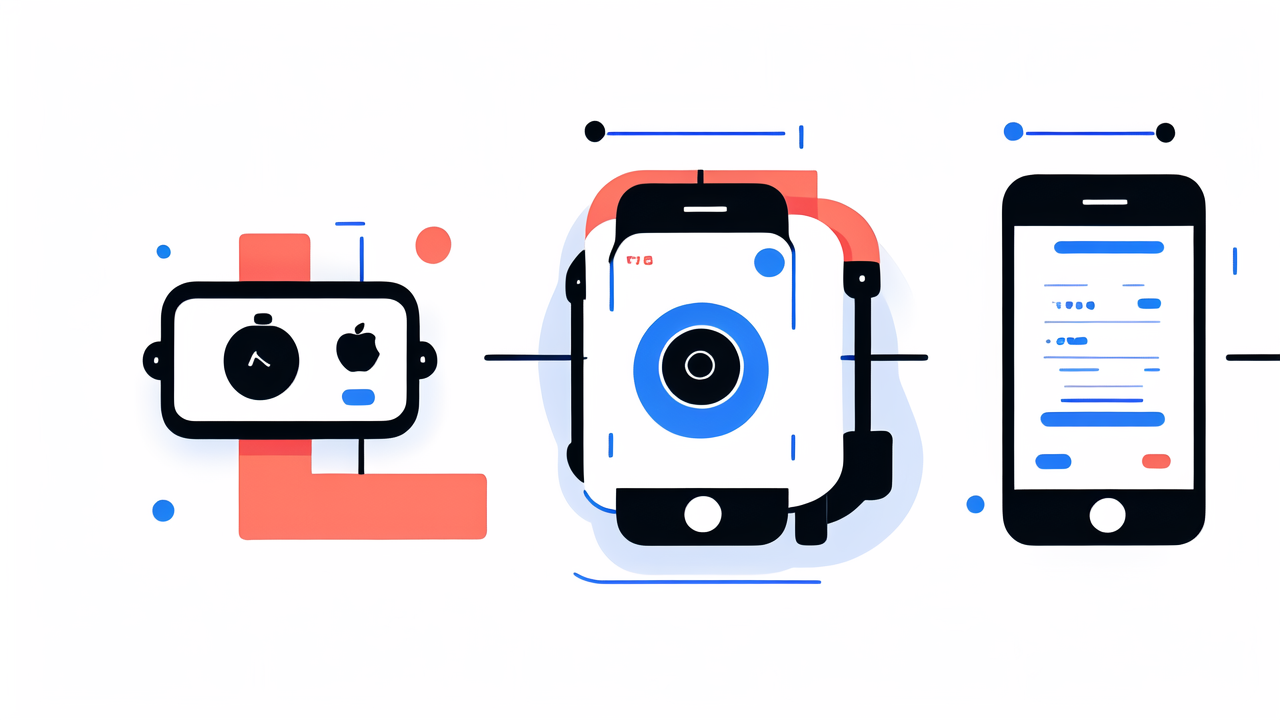Understanding the Evolution of Smartwatch Technology in the United States
The Inception of Wearable Technology: A Brief History
Wearable tech has come a long way since its early days. The first digital watch appeared in the 1970s. It was a big step in tech history. These watches could do simple math and store small amounts of data.

In the 1980s and 1990s, watches got smarter. They could play games and act as calculators. Some even had tiny keyboards. The real breakthrough came in the early 2000s. That's when the first true smartwatches hit the market.
These early smartwatches could connect to phones. They showed notifications and ran basic apps. But they were bulky and had short battery life. Still, they paved the way for today's advanced devices.
Key Milestones in Smartwatch Development
The smartwatch industry has seen many big moments. In 2012, Pebble launched its first smartwatch. It was a huge hit on Kickstarter. This showed there was a real demand for these devices.
2014 was a turning point. That's when Apple announced its first Apple Watch. It set a new standard for smartwatch design and features. Other big tech firms soon followed with their own devices.
Since then, we've seen rapid progress. Smartwatches now have better screens and longer battery life. They can track health data and even make phone calls. Each year brings new features and improvements.
Current State of Wearable Technology in the Market
Today, the smartwatch market is booming. Apple leads the pack, but there are many other players too. Brands like Samsung, Fitbit, and Garmin offer strong options. Each has its own strengths and target audience.
Smartwatches now do much more than tell time. They track fitness, monitor health, and act as extensions of our phones. Many can work on their own, without needing a phone nearby.
The market is still growing fast. More people are seeing the value of these devices. As tech improves, smartwatches are becoming more useful and affordable.
The Impact of AI and Machine Learning on Smartwatch Tech
Enhancing User Experience with AI
AI is changing how we use smartwatches. It makes them smarter and more helpful. AI can learn your habits and adjust to your needs. This makes the watch feel more personal and useful.

For example, AI can predict when you're likely to exercise. It might suggest a workout or remind you to move. It can also learn your sleep patterns. This helps it give better advice on how to improve your rest.
AI also makes smartwatches better at understanding context. They can figure out what you need based on time, location, and activity. This means they can give you the right info at the right time, without you asking.
Smartwatch Tech: Integrating Voice Command and Assistants
Voice commands are a big part of modern smartwatches. They let you control your watch without touching it. This is great when your hands are busy or dirty. You can ask for directions, set reminders, or send texts.
Digital assistants like Siri, Google Assistant, and Alexa are now common on smartwatches. They can answer questions and perform tasks. As they get smarter, they're becoming more like personal helpers on your wrist.
These assistants are always learning. They get better at understanding your speech and needs over time. This makes interacting with your smartwatch feel more natural and effortless.
The Role of Machine Learning in Fitness and Health Monitoring
Machine learning is powering big advances in health tracking. Smartwatches can now detect patterns in your vital signs. This helps spot potential health issues early. Some watches can even detect falls or irregular heartbeats.
These devices are getting better at understanding different types of exercise. They can tell if you're running, swimming, or doing yoga. This leads to more accurate tracking and better fitness advice.
Machine learning also helps make sense of all the data smartwatches collect. It can spot trends and give insights about your health and fitness. This turns raw data into useful information you can act on.
Future Directions: What's Next for Smartwatch Technologies?
The Intersection of AR and VR in Wearable Devices
AR (Augmented Reality) and VR (Virtual Reality) are exciting areas for smartwatches. We're starting to see early examples of AR features. These might show directions or information overlaid on the real world.

In the future, smartwatches could work with AR glasses. The watch might control what you see through the glasses. Or it could provide extra info to enhance the AR experience.
VR is trickier for watches due to their small screens. But they might act as controllers for VR headsets. Or they could provide haptic feedback to make VR more immersive.
The Growing Importance of Wearable Technology in the Workplace
Smartwatches are finding new roles in many jobs. In healthcare, they can help doctors and nurses track patient info. In logistics, they can guide workers through warehouses. Many companies use them to improve safety and efficiency.
These devices can also help with time management and communication. They let workers stay connected without constantly checking phones. This can boost productivity and reduce distractions.
As more people work remotely, smartwatches could play a bigger role. They might help manage work-life balance or facilitate quick check-ins with teams.
Predicting the Next Big Innovation in Smartwatches
The future of smartwatches is exciting. We might see new types of sensors that can track more health data. This could include blood sugar levels or even early signs of illness.
Batteries are likely to improve, allowing for longer use between charges. We might also see new ways to charge watches, like solar power or motion charging.
Flexible displays could lead to new designs. Imagine a watch that wraps around your wrist or expands into a larger screen. The line between smartwatches and other devices might blur. They could become the central hub for all our digital interactions.
As AI gets smarter, watches might predict what we need before we ask. They could become more proactive, offering help based on our habits and surroundings. The possibilities are endless as technology continues to evolve.




Leave a comment
This site is protected by hCaptcha and the hCaptcha Privacy Policy and Terms of Service apply.